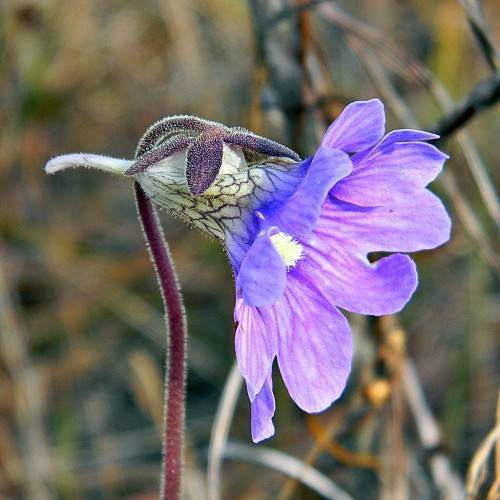
blueflower butterwort
Pinguicula caerulea
Cycle:
Herbaceous Perennial
Watering:
Frequent
Hardiness Zone:
8 - 9
Flowers:
Flowers
Sun:
Full sun
Leaf:
Yes
Growth Rate:
Low
Maintenance:
Moderate
Drought Tolerant:
Yes
Care Level:
Moderate
watering
Blueflower butterwort (Pinguicula caerulea) should be watered every 7-10 days with cooler water. Generally, it should be watered until the soil is damp down to the bottom of the pot. During the winter, blueflower butterwort should be watered less frequently, about once every 4-6 weeks. The plant should be checked for dryness before watering. If the soil is still moist 3-4 centimeters down from the top, then the plant does not need more water.
sunlight
Blueflower butterwort (Pinguicula caerulea) needs a minimum of 4-6 hours of direct sunlight each day to keep it healthy. However, this amount of direct sunlight should be avoided during the hottest time of the day (generally midday) as this can cause the leaves to become sunburnt. Depending on the climate, it is best to provide indirect sunlight or bright indirect light for the remainder of the day, and the plant should also receive bright indirect light in winter. It is also essential to ensure that the soil remains highly moist at all times to prevent dehydration and wilting.
pruning
Blueflower Butterwort rarely requires pruning. This plant is susceptible to winter frost, so it is not recommended to prune it during colder months. Pruning can be done in mid-spring as soon as the plant reaches 5-7 cm (2-3 inches) in size. The purpose of the pruning is to remove any dead flowers and weak stems to promote healthy growth. Prune the stems to 2-3 cm (1 inch) in length and the plant should respond with new growth. Too much pruning can stunt the plant's growth or damage the stems. Pruning should only be done if the overall health of the plant is affected.
